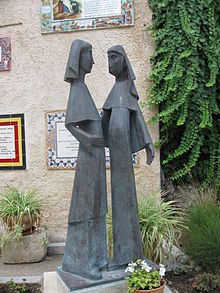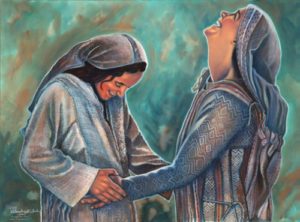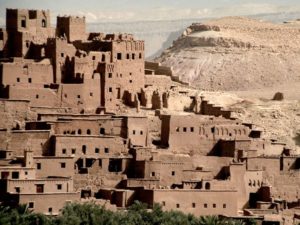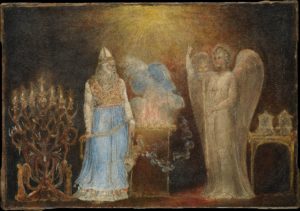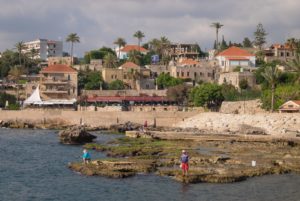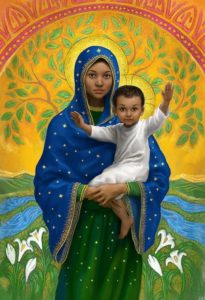
Magnificat, by the Rev. Wil Gafney (21st c)
Wil Gafney is Associate Professor of Hebrew Bible at Brite Divinity School.
Luke 1:46-56:
And Mary said,
Tell out, my soul, the greatness of the Lord,
rejoice, rejoice, my spirit, in God my savior;
so tenderly has he looked upon his servant, humble as she is.
For, from this day forth, all generations will count me blessed,
so wonderfully has he dealt with me,
the Lord, the Mighty One.
His name is Holy; his mercy sure from generation to generation
toward those who fear him;
the deeds his own right arm has done disclose his might:
the arrogant of heart and mind he has put to rout,
he has torn imperial powers from their thrones,
but the humble have been lifted high.
The hungry he has satisfied with good things,
the rich sent empty away.
He has ranged himself at the side of Israel, his servant;
firm in his promise to our forebears,
he has not forgotten to show mercy to Abraham,
and his children’s children, for ever.
Now Mary stayed with Elizabeth about three months and then returned home.
Promise: What was the promise God made to Abraham? *
Thoughts: on parenting — Donna Ross
We’ve always heard Mary’s proclamation of her joy in the “Magnificat”:
Tell out, my soul, the greatness of the Lord,
rejoice, rejoice, my spirit, in God my savior;
so tenderly has he looked upon his servant, humble as she is.
For, from this day forth, all generations will count me blessed,
so wonderfully has he dealt with me,
the Lord, the Mighty One.
But we haven’t always heard Mary’s proclamation of God’s justice:
God has torn imperial powers from their thrones,
but the humble have been lifted high.
The hungry he has satisfied with good things,
the rich sent away empty.
Mary is saying that God’s justice will turn the powers of this world upside down.
Today our nation is divided by our cries for justice and peace. For instance,
We argue about war:
should we become pacifists,
or should we intervene to protect the innocent?
We argue about racism:
should we accept that it takes time to eradicate prejudice,
or should we intervene to protect the victims of oppression?
And we argue about abortion:
should we protect the right of women to make their own choices,
or should we intervene to protect the lives of unborn children?
God calls us to work for justice and peace among all people; God calls us to respect the dignity of every human being. How can we do both?
Has our idea of justice become clouded by our focus on unborn children,
without regard to their pregnant mothers?
Has our idea of justice become clouded by our focus on women’s rights,
disregarding their unborn children?
How can we care for mothers as well as babies
(and babies as well as mothers)?
* The promise
God said to Abraham, “This is my covenant with you: You shall be the ancestor of a multitude of nations… I will make you exceedingly fruitful, and I will make nations of you, and kings shall come from you. I will establish my covenant between me and you, and your offspring after you throughout their generations, for an everlasting covenant, to be God to you and to your offspring after you.”
See Genesis 17:1-7

